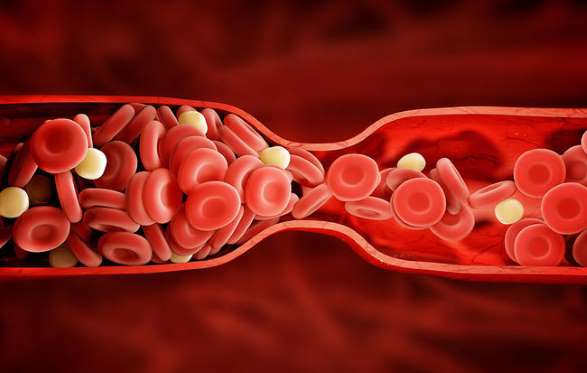Most of the time, blood clots are a good thing. When you get injured, you need your blood to solidify and clump together at the site to help stop bleeding. But sometimes clots crop up when they’re not needed, and that can spell trouble—especially if they form in the deep veins near your muscles.
“When blood clots form in this deeper system, they can be painful and very dangerous,” says Luis Navarro, M.D., founder of the Vein Treatment Center in New York City.
This kind of clot is called deep vein thrombosis, or DVT. DVTs are like roadblocks on your blood highway—they cause traffic jams in your circulation and prevent the blood flow that keeps your system up and running.
Things can get even more serious if a DVT breaks away from its original spot and travels to your lungs.
Then it becomes a pulmonary embolism (PE), a clot that prevents these vital organs from getting the oxygen and blood they need. That can damage your lungs and other organs, and may even be fatal.
Some people are more prone to DVT than others, so it’s worth staying on top of any risk factors.
It’s also smart to know the warning signs so you can act quickly.
It’s important to recognize symptoms, since they can often be overlooked. And getting prompt treatment is key, says Dr. Navarro.
Here are 6 signs you need to watch for.

SWELLING IN ONE LIMB
A puffy leg or arm is one of the most common signs of DVT.
“Blood clots can block the healthy flow of blood in the legs, and blood can pool behind the clot, causing swelling,” says Dr. Navarro.
Be suspicious if your bloated limb comes on quickly, especially if it shows up with a side of pain.

LEG OR ARM PAIN
Usually, DVT pain comes with a combination of other symptoms like swelling or redness, but sometimes it can be standalone.
“Unfortunately, pain from a blood clot can easily be mistaken for a muscle cramp or strain, which is why the issue often goes undiagnosed,” says Dr. Navarro.
DVT pain tends to strike when you’re walking or when you flex your foot upward.
If you have a charley horse you can’t seem to shake—especially if the skin near it is warm or discolored—have your doctor take a look.

REDNESS ON YOUR SKIN
While it’s true that a bruise is a type of blood clot, it’s not the kind you have to worry about. You can’t see DVT.
You might see some bruise-like discoloration, but you’re more likely to see red.
DVTs cause redness in the affected limb, and make your arm or leg feel warm to the touch, according to the National Blood Clot Alliance.

CHEST PAIN
A pain in your chest may make you think heart attack, but it could be a pulmonary embolism.
“Both PE and a heart attack share similar symptoms,” says Dr. Navarro.
However, PE pain tends to be sharp and stabbing, and feels worst when you take a deep breath.
Heart attack pain often radiates from upper areas of your body like your shoulders, jaw, or neck.
The biggest clue is in your breathing—PE pain gets steadily worse with every breath you take.
Either way, you need help immediately.

SHORTNESS OF BREATH OR A RACING HEART
A blood clot in your lung slows your oxygen flow.
When oxygen is low, your heart rate increases to try to make up for the shortage, according to the National Institutes of Health.
Feeling a flutter in your chest and having trouble with deep breaths could be your body signaling that you’ve got a pulmonary embolism lurking in your lungs, says Dr. Navarro.
You might also feel faint, or even pass out. Get help quickly, especially if any of these symptoms come on suddenly.

UNEXPLAINED COUGH
Can’t stop hacking? If you’re also having shortness of breath, high heart rate, or chest pain, it could be a pulmonary embolism.
“The cough will be dry, but sometimes people can cough up mucus and/or blood,” says Dr. Navarro.
When in doubt, phone your doctor or go straight to the ER.












